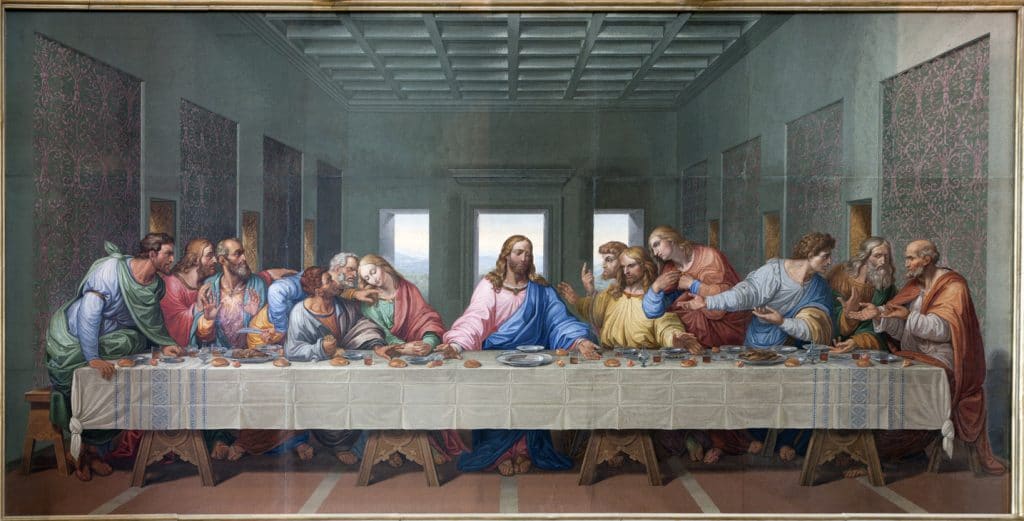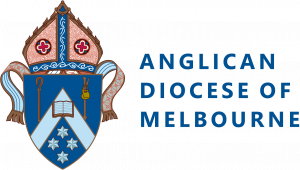
By Bob Derrenbacker
16 March 2022
As Anglicans, we are in the middle of Year C – “the year of Luke” – during which our Sunday lectionary readings draw mostly from the Gospel according to St Luke.
While Luke shares much in common with the other Synoptic Gospels (Mark’s Gospel is, after all, his main literary source), Luke’s Gospel in many ways presents a unique portrait of Jesus. In fact, nearly one third of the stories in Luke occur only in his gospel, for instance his narratives of Jesus’ birth and infancy, the parables of the Good Samaritan and the Prodigal Son, and the post-resurrection appearances of Jesus, including his ascension. Luke’s gospel also shows particular interest in female characters, and in the problem of wealth and materialism, as well as the motifs of meals, food, prayer, and the Holy Spirit, all while looking ahead to Luke’s second volume – the Acts of the Apostles. As such, Luke’s portrait of Jesus is distinctive in a number of different ways, particularly his concluding chapters where he narrates the story of Jesus’s Passion.
In his Passion narrative, Luke follows the other gospels by including a story of the last meal shared by Jesus and his disciples, a prediction of Jesus’s betrayal by Judas and denial by Peter, the arrest of Jesus, the trial of Jesus before the Sanhedrin, Pilate’s sentence of death, Jesus’ crucifixion alongside two others, and his burial in a tomb owned by Joseph of Arimathea. But there is much in Luke’s Passion narrative that is distinctive and unique. Thus, Holy Week in Year C provides us with the opportunity to think about the distinctive features of Luke’s account of the Passion of Jesus.
While Luke follows Mark’s version of the Last Supper, the eucharistic words of Jesus look more like St Paul’s words in 1 Corinthians 11:23-26 and less like those in Mark. In addition, Luke adds a second cup to the scene (cup one, then bread, followed by cup two) and moves the prediction of the betrayal of Jesus by one of his disciples to after the supper. In addition, Luke locates the disciples’ dispute about greatness (from a much earlier place in Mark) to the Last Supper table in his gospel, and includes the prediction of Peter’s denial at the meal as well. Finally, Luke includes Jesus’ somewhat cryptic saying to his disciples about taking two swords, which we find only in Luke.
Like Mark, Luke includes an account of the arrest of Jesus. However, there is no mention of the Garden of Gethsemane in Luke. Instead, Luke has Jesus praying somewhere in the vicinity of the Mount of Olives. And while all four Gospels portray a disciple hacking off the ear of a slave of the high priest, only in Luke do we see Jesus healing the man.
As in Mark, Luke juxtaposes the trial of Jesus to Peter’s denial. But Luke reverses the sequence, telling the story of Peter’s denial first and locating the trial of Jesus before the Sanhedrin the next morning, unlike Mark, who has the trial take place during the night.
Again like Mark, Jesus is then tried by Pilate, but only in Luke do we see Jesus also questioned by Herod Antipas, who then sends Jesus back to Pilate for Jesus’ sentence of death. Interestingly, Luke portrays Pilate proclaiming Jesus’ innocence in three places in chapter 23: verse four, verse 14 and verse 22. Luke also omits the mocking of Jesus by the Roman soldiers, including dressing Jesus up in with a kingly cloak and their placement of a crown of thorns on his head which we see in Mark 15.
While Jesus is led away to the place of crucifixion outside the city walls of Jerusalem, only in Luke do we see Jesus’ words of warning to the “daughters of Jerusalem,” those weeping women of Jerusalem who were beating their chests as Jesus was led away to the place of execution. And all four Gospels note that Jesus was crucified along with two others. But it is only in Luke that we have the account of the “repentant thief” crucified alongside Jesus who requests that Jesus “remember me when you come into your kingdom,” to whom Jesus responds: “Truly I tell you, today you will be with me in Paradise.”
Other statements of Jesus from the Cross are unique to Luke – only in Luke’s Gospel do we see Jesus pray for his executioners: “Father, forgive them; for they do not know what they are doing.” While both Matthew and Mark include Jesus’ cry of dereliction, “My God, my God, why have you forsaken me?”, Luke does not. Instead, he portrays Jesus very much in control of the events that are unfolding around him on the Cross. As a result, Jesus’ last words in Luke’s Passion narrative are “Father, into your hands I commend my spirit.”
Instead of professing Jesus to be the Son of God as in Matthew and Mark, in Luke the Roman centurion at the Cross “praises God” and proclaims: “Certainly this man was innocent.” It is yet one more declaration of Jesus’ innocence by a Roman official.
Finally, Luke implies that none of the disciples had deserted Jesus at his arrest (unlike in Matthew and Mark), but that they were witnesses to the crucifixion of Jesus. We read: “But all of his acquaintances, including the women who had followed him from Galilee, stood at a distance, watching these things.”
As we think about what is unique in Luke’s Passion Narrative, it’s important to ask two related questions: Why does Luke present Jesus so distinctively his Passion narrative? And, what are we to take away from this distinctive portrait as we mark Holy Week?
First, it’s important to remember that the pre-Passion portions of Luke’s Gospel anticipate the suffering and death of Jesus in ways that are unique. For example, the idea of Jesus as King and his kingdom, which we see featured in Luke’s Passion narrative, are anticipated very early in Luke’s gospel with Gabriel’s annunciation to Mary that: “He will reign over the house of Jacob forever, and of his kingdom there will be no end.” As well, Simeon’s prediction of a sword “piercing” the soul of Mary anticipates the death of her son in the Passion. The vanquished devil we see at the conclusion of Jesus’ temptations “departs from Jesus until an opportune time,” which, of course, looks ahead to the satanically-inspired conspiracy against Jesus we read of in Luke 22. Finally, the description of Herod Antipas’ desire to see Jesus in Luke 9 anticipates Jesus’ later meeting with Herod in Jerusalem.
Second, the events of the Passion unfold under the control of Jesus, who, ironically, is also their victim. The narrative is propelled forward through the prayers of Jesus: for instance, Jesus’s prayer at the Last Supper for Peter that his “faith may not fail” and that he would “strengthen” his fellow-disciples; Jesus’s command to his disciples to “pray that [they] many not come into the time of trial” and his own prayer just prior to his arrest; or, Jesus’s prayer of forgiveness for his executioners and his concluding prayer at the moment of his death, “Father, into your hands I commend my spirit.”
And third, in his Passion narrative, Luke is looking ahead to his second volume – the Acts of the Apostles. Not only does the Passion of Jesus foreshadow the arrest, trial and death of Stephen in Acts, Luke’s Passion and resurrection narratives anticipate the post-ascension activity of the disciples of Jesus in and around Jerusalem. They do not desert Jesus in Luke’s Gospel and Acts as they do in Matthew and Mark. Instead, we read in Acts that Jesus “ordered them not to leave Jerusalem, but to wait there for the promise of the Father” and the baptism of the Holy Spirit, for the proclamation of the Good News of Jesus the Messiah “is to be proclaimed in his name to all nations, beginning from Jerusalem” (Luke 24:47).
In Luke’s mind, the prayer-propelled events of the Passion of Jesus anticipate the Holy Spirit-propelled proclamation of the Gospel, beginning “in Jerusalem, in all Judea and Samaria, and to the ends of the earth.” Thus, there is much that is unique and distinctly “Lukan” in Luke’s Passion Narrative, distinctive features and perspectives that are particularly worth considering during Holy Week in Year C, the Year of Luke.
The Reverend Canon Dr Bob Derrenbacker is dean of Trinity College Theological School.






